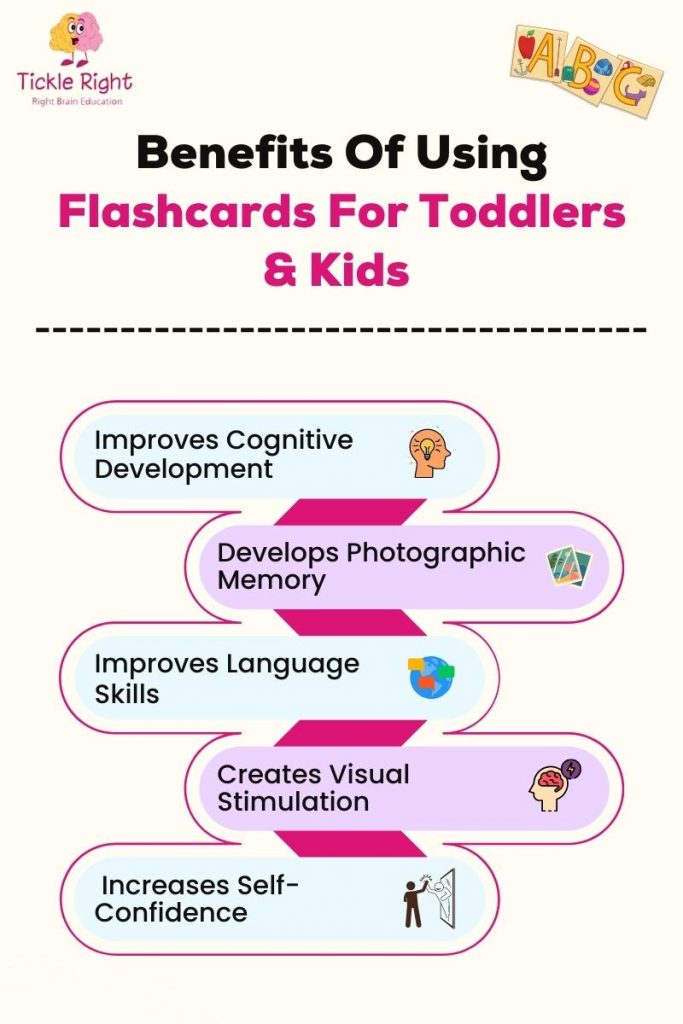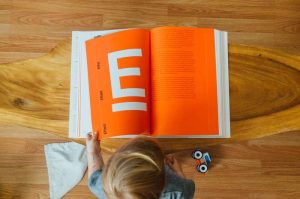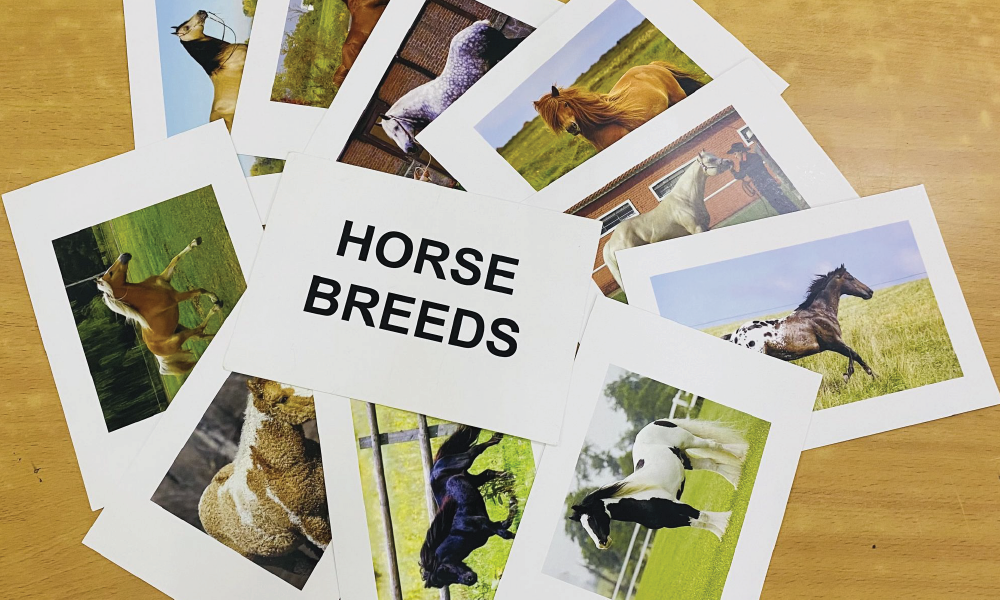Redefining Social Interaction in the Digital Era Today’s children are growing up in a world where digital screens often replace playgrounds and emojis replace expressions. While technology has its benefits, like access to learning tools, global exposure, and creative platforms, it has also quietly reduced the quality of real, face-to-face interactions. And here’s the truth: No app can replicate...
Right Brain Training: Flashcard’s Benefits For Toddlers & Kids
Right Brain Training: Flashcard’s Benefits For Toddlers & Kids
Are you looking for another great method to train your child’s mind? Because quickly flashing a heap of colorful cards in front of your little one gets them rolling. This trick has proven to grab a child’s attention effectively with ever-lasting impact. As parents, you may often worry or your parental intuition may take over. In that case, take a moment to realize how can you effectively teach your child at home. And you will get your answer. Learning with flashcards is a fantastic tool that can be very effective for learning.
By shuffling the deck of flashcards & presenting it to your child, you expose them to new information. This becomes an interesting way to introduce new concepts & share information to stimulate learning amongst toddlers. Flashcard learning has recently gained popularity as a great home-schooling technique. This is also a great opportunity to spend some time with your little one. You must help your child stimulate their visual perception as this activates their curiosity.
Therefore, join in on the ride to create an interactive flashcard session for your child. We at Tickle Right make sure to contribute to a child’s overall development with fun right brain training sessions.
What Are Flashcards For Kids?
Flashcards for kids are colorful cards filled with limited information – images, concepts, ideas & words. It is an excellent way for in-depth learning. Its main purpose is to strengthen a child’s mind for a high attention span. These cards hold the potential to fasten a child’s ability to recall information from pictures quickly. It is more about an easy training style to help kids absorb & retain information. The intention with which these flashcards are prepared is to help your little one – grasp, learn, & master! Its self-assessment approach helps your toddler explore, assess & develop a love for learning. You’ll observe your child picking up information quickly & remembering it in long term.
When Is The Good Age To Introduce Flashcards To Kids?
You can introduce flashcards to your little one as early as 6 months of their age. This will be a step ahead toward their early childhood learning. You must think of it as a way to stimulate a child’s right brain & increase their awareness. In case your child is 3-4 months old, you must introduce them to infant stimulation flashcards. As they reach an age group of 12-13 months, you can keep on adding new information. Like numbers, phonics, pictures, & much more. As it’s said, the younger your little one is, the easier it will be to teach them. You must consider stimulating your baby’s visual senses early. Since a child’s visual communication pathway is developed within 3 months. They will be able to concentrate better.
Benefits Of Using Flashcards For Toddlers & Kids
Several benefits of flashcard learning help a child improve their knowledge & memory. As it is a quite popular method, it helps your child process information with ease. It indicates a child’s visual memory capability that helps identify patterns & grasp them. Therefore, the following are the benefits of using flashcards for toddlers & kids:

1. Improves Cognitive Development
Flashcard learning is an in-depth method of improving a child’s cognitive & critical skills. Since it lays the foundation for quick recalling of information from pictures. This arrangement helps empowers both the brain hemispheres of a child’s mind. It is also associated with improving their learning potential by helping them process information in a fun interesting manner.
2. Develops Photographic Memory
Photographic memory is the process of recalling information quickly from pictures. It’s common for children to sight a picture & remember the detailing in their minds. Flashcard learning helps trigger visual stimuli that increase your child’s brain capacity. This helps them retain information in great detail. This is helpful for both educational & non-educational data.
3. Improves Language Skills
The objective of introducing flashcards to children is to primarily improve their knowledge. Not only does it focus on a child’s cognitive skills, but it helps create an interactive session at home & elsewhere. By constantly exposing them to the same information, they get familiar with the data. You can even teach a new language to your little one via flashcards. As parents, you must include different subjects to make it a fun time for your little munchkin. It creates a direct positive impact on their social & conversation skills.
4. Creates Visual Stimulation
Flashcards have an astounding way to trigger a visual stimulation in your child’s mind. This helps them think hard & recall information easily. Even if you ask your little one after a long period, they would be in a position to answer it. Flashcard learning is a way to capture & stimulate a child’s mind to create curiosity & respond. This curiosity leads to effective learning. As parents, you must help your child quest their curiosity by putting up questions & answering the questions they raise.
5. Increases Self-Confidence
Nowadays children need to get exposed to different bits of information every day. As they begin to grasp this data, you must reward their effort. This helps them gain self-confidence to interact & explore more. Learning with flashcards boosts a child’s mind to swiftly adapt to the information. It gives the right reasons to focus & strengthen their mind. As parents, your primary role is to make these sessions short, fun, & interactive for your child. This will help them gain interest.
How To Make Flashcards For Kids?
Making flashcards require you to put together a bundle of A5 size sheets. Yes, that is the ideal size. It’s important to display only one subject at a time on a single flashcard. The picture must be clear with a neat background. You can choose the flashcard’s subject as anything or as per the child’s interests. As it is an incredibly versatile tool to increase your child’s brain potential. Therefore, you must choose the following steps to create homemade flashcards:
- Gather subject information
- Select clear pictures
- Add texts to the picture
- Print the picture & stick it
- Laminate those flashcards
Flashcards Teaching Strategies & Tips To Follow
You must remember that young children are quick learners! Since flashcard learning promotes active & quick recalling of information. You must always make it a point to put up questions related to the flashcards later. An interesting way to keep your child engaged is to play fast-forward quiz activities with them. Other than that, you can play matching games, guess who? game to create a light learning environment. You shuffle the cards to present them in a manner you wish to.
You can also segregate these cards based on your child’s response. If they answer correctly, you can create a different pile of them & vice versa. After your child gets a hang of any particular set, you can change the information & present a different set of flashcards. However, you must make sure to periodically check those cards to make sure they recall them correctly.
While using flashcards for kids, please keep the following tips in mind:
- Strictly avoid showing the same flashcards repeatedly. You must stick to flashing 2 cards per second.
- Try choosing the flashcard subject as per your child’s interest.
- You must constantly update the flashcard’s content. Repeating the same information now & then can create boredom for them.
- Flashcard activities must be performed in an active positive mood. In case your child is sleepy/sick/stressed, don’t force them to do the activity.
- Take breaks between the flashcard learning sessions. Make it fun & sound like a game.
- The size of the flashcards shouldn’t be too small. It may get your child to lose interest. The color shouldn’t be too dull or too much. They must be presented interactively.
FAQs
-
How do children learn from flashcards?
Flashcard learning advances early childhood training for kids. It has the potential to improve your child’s attention span for long periods. Flashcards primarily help children to recall information from pictures very quickly. This promotes photographic memory & triggers a visual stimulus for a response. It is a proven way to train children on different topics of their interests & others too.
-
Why are flashcards good for children?
Flashcards are a great tool for children for the following reasons:
- Promotes Cognitive Development
- Improves Language Skills
- Builds Photographic Memory
- Creates Visual Stimulation
- Develops Self Confidence
- High Attention Span
-
How many flashcards are too many?
On average, you can present 100 to 250 flashcards yearly. However, a flashcard set must consist of 12-15 cards. You can present 3 sets of such cards every day. Help your child get into the pace for each set being repeated thrice a day. The duration shall be around 15-20 seconds for each set.
Takeaway

You must remember that every child is unique. They are subconsciously quick learners & all they need is a slight push. Flashcards for kids are incredibly useful resources for teaching and they also make the learning process easier. Children of all ages can enjoy them and have much to gain from this visual tool. As parents, you must give the flashcards a try, and we promise you, that your little one will truly amaze you. Happy skill-building!

